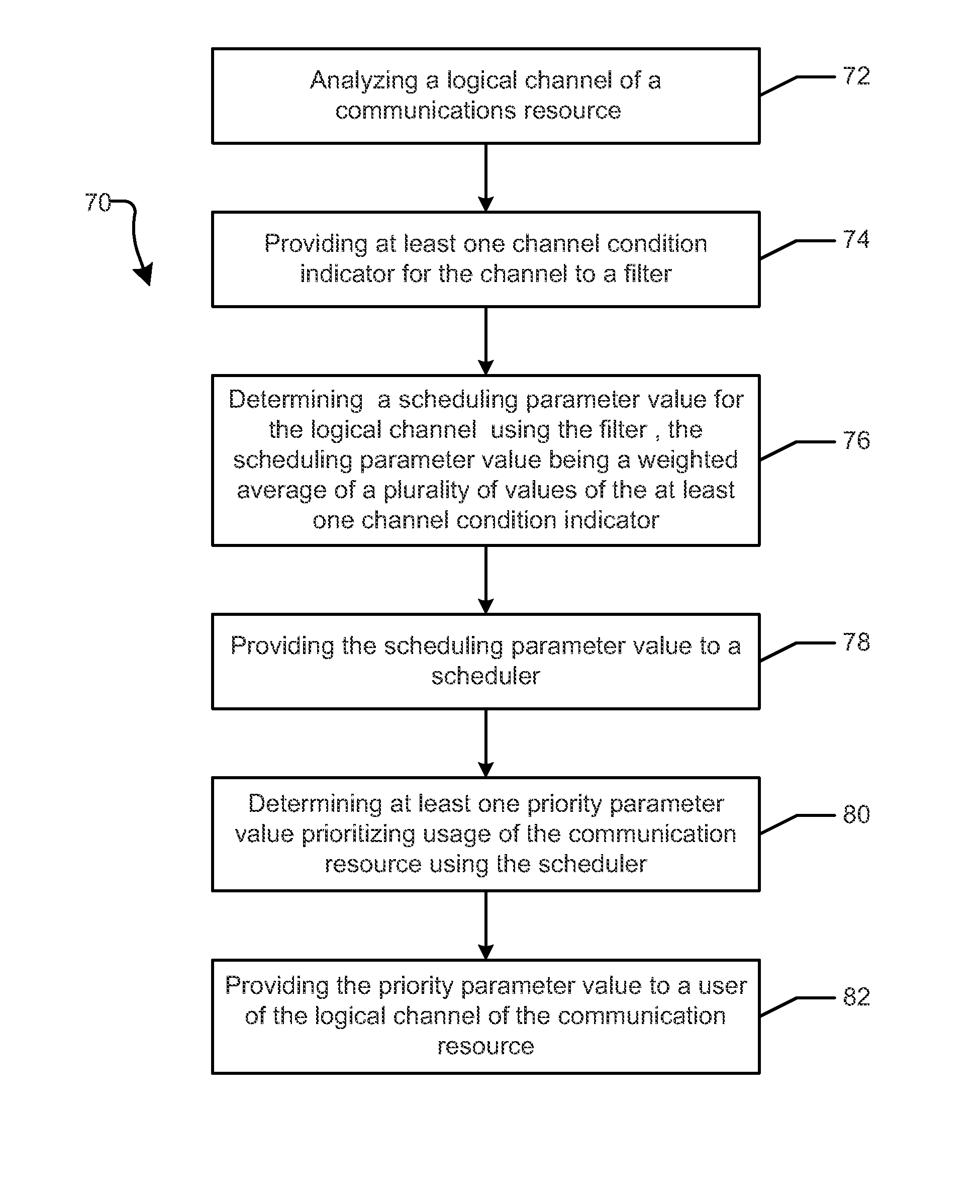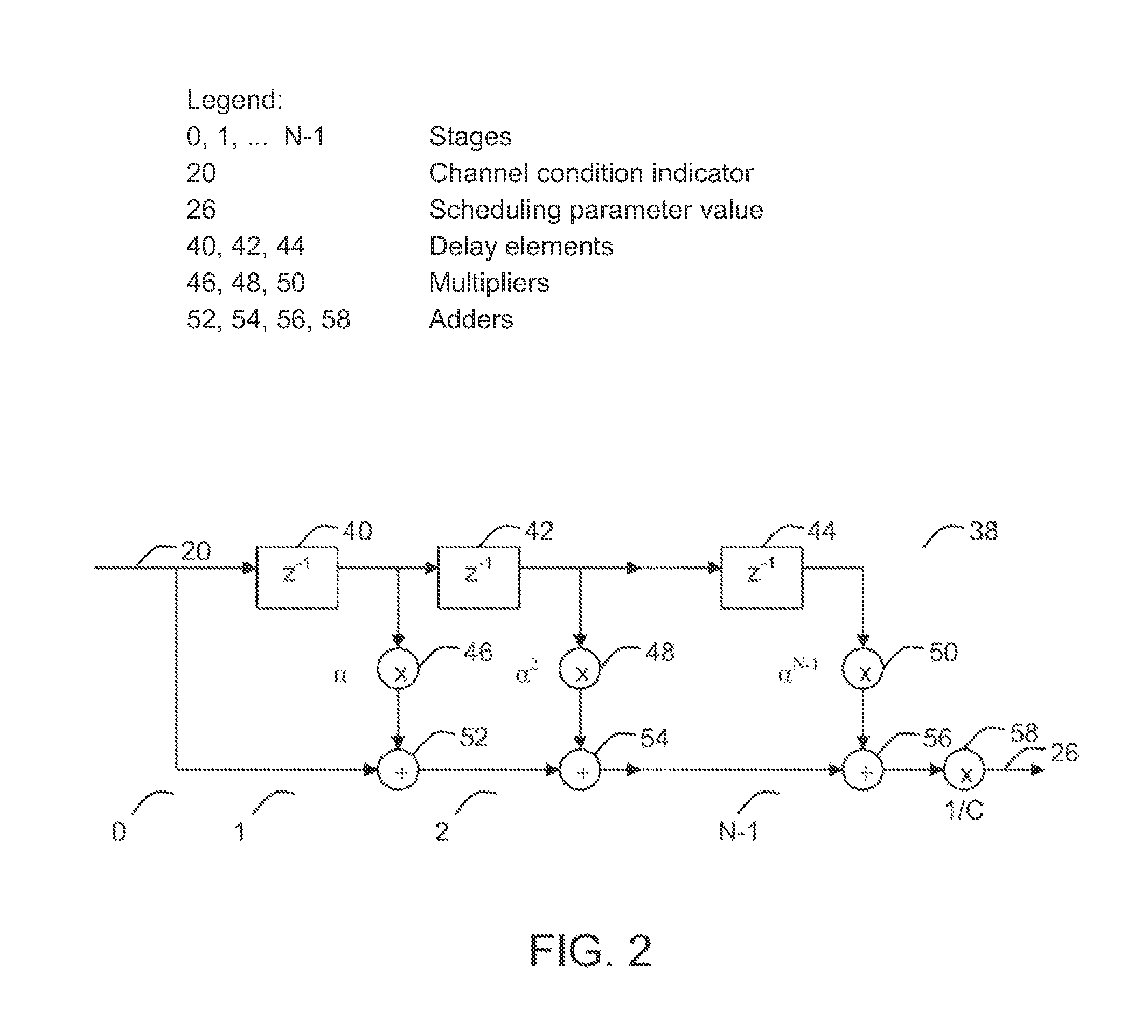Channel condition dependent scheduling
a channel condition and scheduling technology, applied in the field of communication systems, can solve the problems of affecting the average bit rate, affecting the latency and jitter of de-prioritising customers with less efficient channel conditions, and limited capacity of resources,
- Summary
- Abstract
- Description
- Claims
- Application Information
AI Technical Summary
Problems solved by technology
Method used
Image
Examples
first embodiment
[0025]Referring now to FIG. 2, the FIR filter may be a weighted moving average filter 38. Therefore, a block diagram of an example of a weighted moving average filter for channel condition indicator 20 values, having N stages (0, 1, 2, . . . , N−1), is shown. It comprises N−1 delay elements 40, 42, 44, N−1 multipliers 46, 48, 50 for multiplying a buffered value with weighting factors corresponding to eq. 1, adders 52, 54, 56 for adding the multiplication result to the input channel condition indicator value, and a divisor 58 for dividing the filter result by a constant C. This N-stage weighted moving average filter 38 is described with the following equations, wherein yk is the output scheduling parameter 26 value at time k, xk is the channel condition indicator 20 as input value of the shown filter, and α is a weighting factor.
[0026]yk=(xk+α·xk-1+α2·xk-2+…+αN-2·xk-(N-2)+αN-1·xk-(N-1)) / C(eq.1)yk+1=(xk+1+α·xk+α2·xk-1+…+αN-2·xk-(N-3)+αN-1·xk-(N-2)) / C=(xk+1+α·(xk+α·xk-1+…+αN-3·xk-(N...
embodiment 70
[0049]Referring now to FIG. 4, a schematic flow diagram of an example of an embodiment 70 of a method for channel condition dependent data traffic scheduling is illustrated. It comprises analysing 72 a logical channel 22 of a communication resource 16, providing 74 at least one channel condition indicator 20 for the channel 22 to a filter 24, determining 76 a scheduling parameter 26 value for the logical channel 22 using the filter 24, the scheduling parameter 26 value being a weighted average of a plurality of values of the at least one channel condition indicator 20, providing 78 the scheduling parameter 26 value to a scheduler 12, determining 80 at least one priority parameter 14 value prioritising usage of the communication resource 16 using the scheduler 12, and providing 82 the priority parameter 26 value to a user 28 of the logical channel 22 of the communication resource 16. This method may be applied to a plurality or all logical channels and users, consecutively or concurr...
PUM
 Login to View More
Login to View More Abstract
Description
Claims
Application Information
 Login to View More
Login to View More - R&D
- Intellectual Property
- Life Sciences
- Materials
- Tech Scout
- Unparalleled Data Quality
- Higher Quality Content
- 60% Fewer Hallucinations
Browse by: Latest US Patents, China's latest patents, Technical Efficacy Thesaurus, Application Domain, Technology Topic, Popular Technical Reports.
© 2025 PatSnap. All rights reserved.Legal|Privacy policy|Modern Slavery Act Transparency Statement|Sitemap|About US| Contact US: help@patsnap.com



